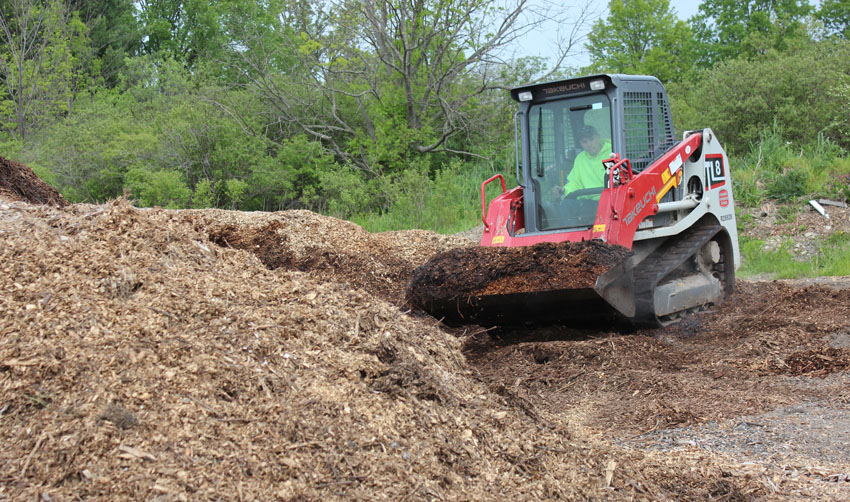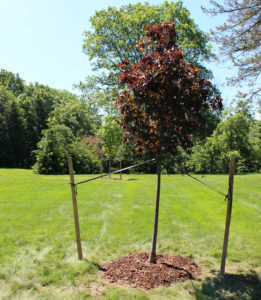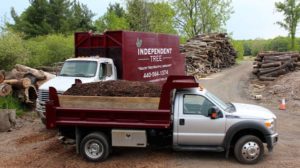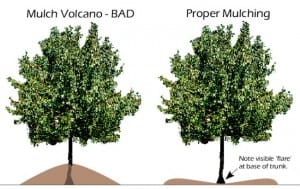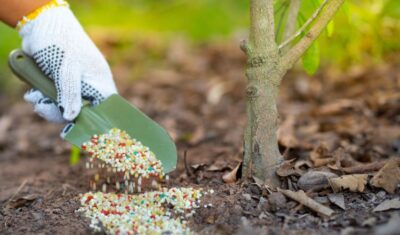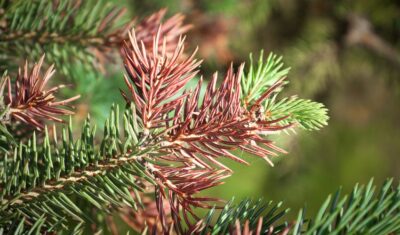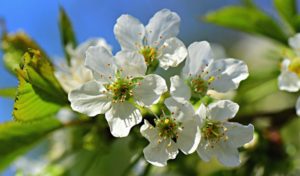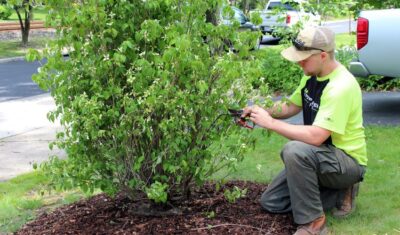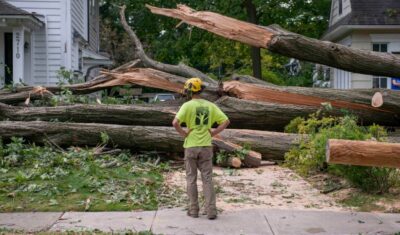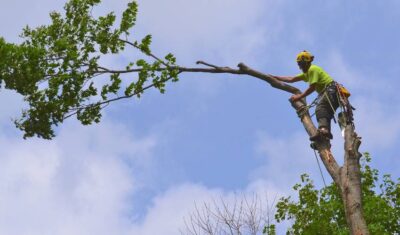Mulch is one of the least appreciated, but most important additions to the landscape. A thick layer of mulch (such as composted wood chips) over the soil is extremely beneficial to trees and your landscape. It helps save water, reduces the soil temperature, keeps the yard weed free, improves soil structure and delivers needed nutrients. Mulch also gives that finishing touch when used in a flowerbed or around a tree.
What Is Mulch?
Mulches are materials placed over the soil surface to maintain moisture.
Options include both inorganic (like gravel and rubber chips) and organic mulch (such as composted wood chips, shredded bark, grass clippings, pine needles, pine straw and shredded leaves).
While both types of mulch can help to suppress weeds, minimize moisture loss and reduce soil temperature, only organic mulches also help to improve the soil below.
Choosing the Right Mulch
The choice of mulch can be important to the health of landscape plants.
We generally recommend using a good quality organic mulch. Many store-bought mulches are made with byproducts from the lumber industry and may contain shredded construction debris or other waste, as well as toxic chemicals, metals or lead paint. And inorganic mulches don’t provide as many benefits, particularly to the soil.
Composted wood chips can make good mulch, especially when they include some bark and leaves. Fresh wood chips also may be used around established trees and shrubs. Avoid using fine, non-composted wood chips, as nitrogen in the surface layer of the soil may be taken up by the roots as the wood chips decompose.
We deliver and apply composted wood chips that make a wonderful tree mulch. Give us a call if you’d like to order some – it’s only $8/yard plus delivery.
A Note About Grass Clippings As Mulch
Some of our customers use grass clippings as mulch; it’s one of the cheapest and most readily available mulches around, and is generally safe to use.
However, if you use broadleaf weed killer chemicals on your lawn, the herbicide can remain active in the clippings and harm your trees.
Make sure you know whether herbicides have been used, and avoid using grass clippings near trees if you’re unsure whether or not they’ve been treated.
Never spray weed killers (such as glysophate) near tree roots. Some of the chemical is released into the soil and is taken up by tree roots, which can damage the overall health of the tree. Common problems include fungal diseases, reduced cold hardiness and drought tolerance, and poor quality fruit on fruit-bearing trees.
How to Apply Mulch
As you’re spreading mulch in the landscape, keep the following in mind:
- Determine if there’s adequate soil drainage; it soil doesn’t drain well, adding mulch may only make the problem worse.
- Check out what’s planted in the area where you’ll be spreading mulch; some plants may benefit from the use of slightly acidifying mulch, such as pine bark.
- Look for girdling roots near the base of the tree (pull back any existing mulch to expose the base of the trunk). These are roots that wrap around the trunk just below the soil surface and can eventually kill the tree or cause it to topple in a storm. If you see girdling roots, give us a call.
- If mulch is already present, check the depth. If it’s deep enough, break up any matted layers and refresh the appearance with a rake.
- Keep mulch away from the trunk and never pile it up around the tree. No mulch volcanoes, please!
- Extend the mulched area around the tree at least far enough to keep lawn mowers and string trimmers away from the trunk. Ideally, youd spread mulch out to the edge of a tree’s crown or beyond. Remember, if a tree had a say in the matter, its entire root system (which usually extends well beyond the drip line) would be mulched.
- Evenly spread about 2 to 4 inches of mulch around trees (but not up against the trunk!). In flower beds, use 1-2 inches. Coarse mulches can be applied slightly deeper without harm.
Avoid Mulch Volcanoes!
As beneficial as mulch is, too much can be harmful. The generally recommended mulching depth is 2 to 4 inches. Unfortunately, many landscapes are falling victim to a plague of over-mulching. “Mulch volcanoes” are excessive piles of mulch materials applied around the base of trees. While organic mulches must be replenished over time, buildup can occur if reapplication outpaces decomposition or if new material is added simply to refresh color. Deep mulch can be effective in suppressing weeds and reducing maintenance, but it often causes additional problems.
Benefits of Proper Mulching
- Helps reduce soil moisture loss through evaporation
- Helps control weed germination and growth
- Insulates soil, protecting roots from extreme summer and winter temperatures
- Can improve soil biology, aeration, structure (aggregation of soil particles), and drainage over time
- Can improve soil fertility as certain mulch types decompose
- Inhibits certain plant diseases
- Reduces the likelihood of tree damage from “weed whackers” or the dreaded “lawnmower blight”
- Gives planting beds a uniform, well-cared-for look
Problems Associated with Improper Mulching
- On wet soils, deep mulch can lead to excess moisture in the root zone, which can stress the plant and cause root rot.
- Piling mulch against the trunk or stems of plants can stress stem tissues and may lead to the development of insect and disease problems or stem girdling roots.
- Some mulches, especially those containing fresh grass clippings, can affect soil pH and may eventually lead to nutrient deficiencies or toxic buildups.
- Mulch piled high against the trunks of young trees may create habitats for rodents that chew the bark and can girdle the trees.
- Thick blankets of fine mulch can become matted and may reduce the penetration of water and air.
- Anaerobic “sour” mulch may give off pungent odors, and the alcohols and organic acids that build up may be toxic to young plants.
When in doubt, look to Mother Nature
Trees growing in a natural forest environment have their roots anchored in a rich, well-aerated soil full of essential nutrients and soil microorganisms. The soil is blanketed by leaves, organic materials, and living organisms that replenish and recycle nutrients. This environment is optimal for root growth and mineral uptake. Urban landscapes and new developments, however, are typically harsher environments with poor quality soils, reduced organic matter, and large fluctuations in soil temperature and moisture. Applying a 2- to 4-inch layer of organic mulch can mimic a more natural environment and improve plant health.
Contact Independent Tree
Independent Tree offers mulching services. Contact us for more information about how we can deliver, apply, and maintain organic mulch on your property.Recent Articles
Topics
About The Author

STAY IN THE LOOP
WITH OUR
LATEST UPDATES
"*" indicates required fields

